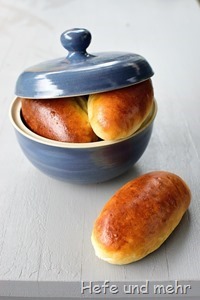 I stumpled about the Neheimer Stütchen during a guided tour in the cologne cathedral. It was the fact that Count Gottfried von Arnsberg IV. is buried as the only not clerical person. This prominat burial place he got because of a very generous gift to the cologne bishop – and to ensure that the people in his county would pray for him after his death he gifted a very good forest to the city of Neheim. The forest still exists and from the yearly gain of it several celebrations are paid: each year a wreath is laid down at his tomb in the cathedral, there are count gottfried games and all children of the city get a roll called “Neheimer Stütchen” at the 4th september.
I stumpled about the Neheimer Stütchen during a guided tour in the cologne cathedral. It was the fact that Count Gottfried von Arnsberg IV. is buried as the only not clerical person. This prominat burial place he got because of a very generous gift to the cologne bishop – and to ensure that the people in his county would pray for him after his death he gifted a very good forest to the city of Neheim. The forest still exists and from the yearly gain of it several celebrations are paid: each year a wreath is laid down at his tomb in the cathedral, there are count gottfried games and all children of the city get a roll called “Neheimer Stütchen” at the 4th september.
The Neheimer Stütchen is a sweet milk roll, a bit larger then normal and already that tempted me. And as this story is such a nice one that it fits very well in my blog series of regional, traditional breads. And so I baked my version of this roll, with a biga for aroma and a water roux for fluffy soft crumb.

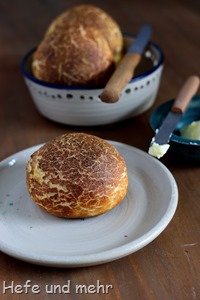 The next regional bread recipe is from Northern Germany, too. Or, to be more precise, from Osnabrück. It is a roll which roots in meagre days when good flour with a high amount of gluten was rare. The poor flour quality results in a finer, denser crumb and a smaller volume then normal rolls. To archive good looking rolls with a nice crust despite the flour quality the bakers used a trick. They spread the rolls with different kinds of mixtures which results on a crisp, and crackled crust. This special look of the crust gave the rolls their name “Springbrötchen” (lit. Cracked Rolls).
The next regional bread recipe is from Northern Germany, too. Or, to be more precise, from Osnabrück. It is a roll which roots in meagre days when good flour with a high amount of gluten was rare. The poor flour quality results in a finer, denser crumb and a smaller volume then normal rolls. To archive good looking rolls with a nice crust despite the flour quality the bakers used a trick. They spread the rolls with different kinds of mixtures which results on a crisp, and crackled crust. This special look of the crust gave the rolls their name “Springbrötchen” (lit. Cracked Rolls).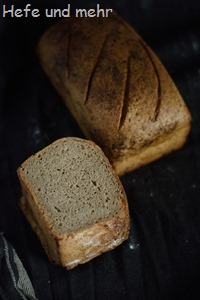 When I asked for suggestions of
When I asked for suggestions of 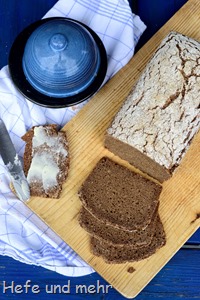 The grandmother of my dearest complained that today you can not get real blackbread anymore. The “modern” one is to moist in her opinion. When I asked how a “real” blackbread should be, she answered: “Just like it once had been”. My argument that I do not know how the bread looked like ninety years back in the past just gained me a critical gaze. But at the end I could get some informations about her childhoods blackbread from her: moist, but not so moist we today, dark and baked with rather fine cracked rye. And my ambitions was aroused to recreate this bread for her.
The grandmother of my dearest complained that today you can not get real blackbread anymore. The “modern” one is to moist in her opinion. When I asked how a “real” blackbread should be, she answered: “Just like it once had been”. My argument that I do not know how the bread looked like ninety years back in the past just gained me a critical gaze. But at the end I could get some informations about her childhoods blackbread from her: moist, but not so moist we today, dark and baked with rather fine cracked rye. And my ambitions was aroused to recreate this bread for her.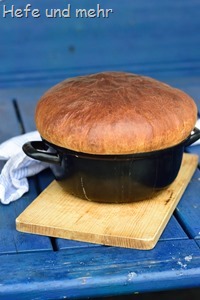 A small part of a comment caught my attention: the word “Pottweck”. I asked for a description and got a very detailed explanation from Jürgen.
A small part of a comment caught my attention: the word “Pottweck”. I asked for a description and got a very detailed explanation from Jürgen. 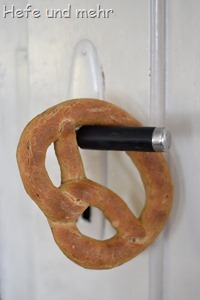 When I was researching another recipe, I stumbled upon the recipe for anise pretzels . These pretzles are made without lye and are typically served during winter in the region Upper Franconia. They contain a lot of anise, as their name promise.
When I was researching another recipe, I stumbled upon the recipe for anise pretzels . These pretzles are made without lye and are typically served during winter in the region Upper Franconia. They contain a lot of anise, as their name promise.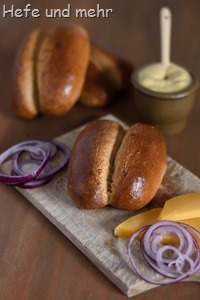

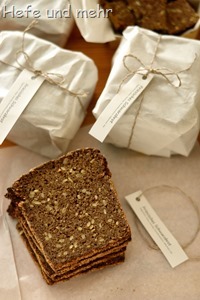 The very first suggestion I got for the post series “regional bread” was East Frisian Black Bread. As I already wrote a recipe for the magazine “
The very first suggestion I got for the post series “regional bread” was East Frisian Black Bread. As I already wrote a recipe for the magazine “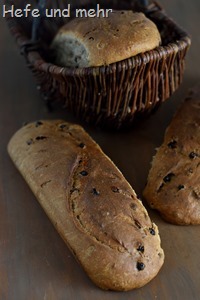 I’m totally thrilled about all the little jewels I meet in range of my “regional bread” series. From
I’m totally thrilled about all the little jewels I meet in range of my “regional bread” series. From